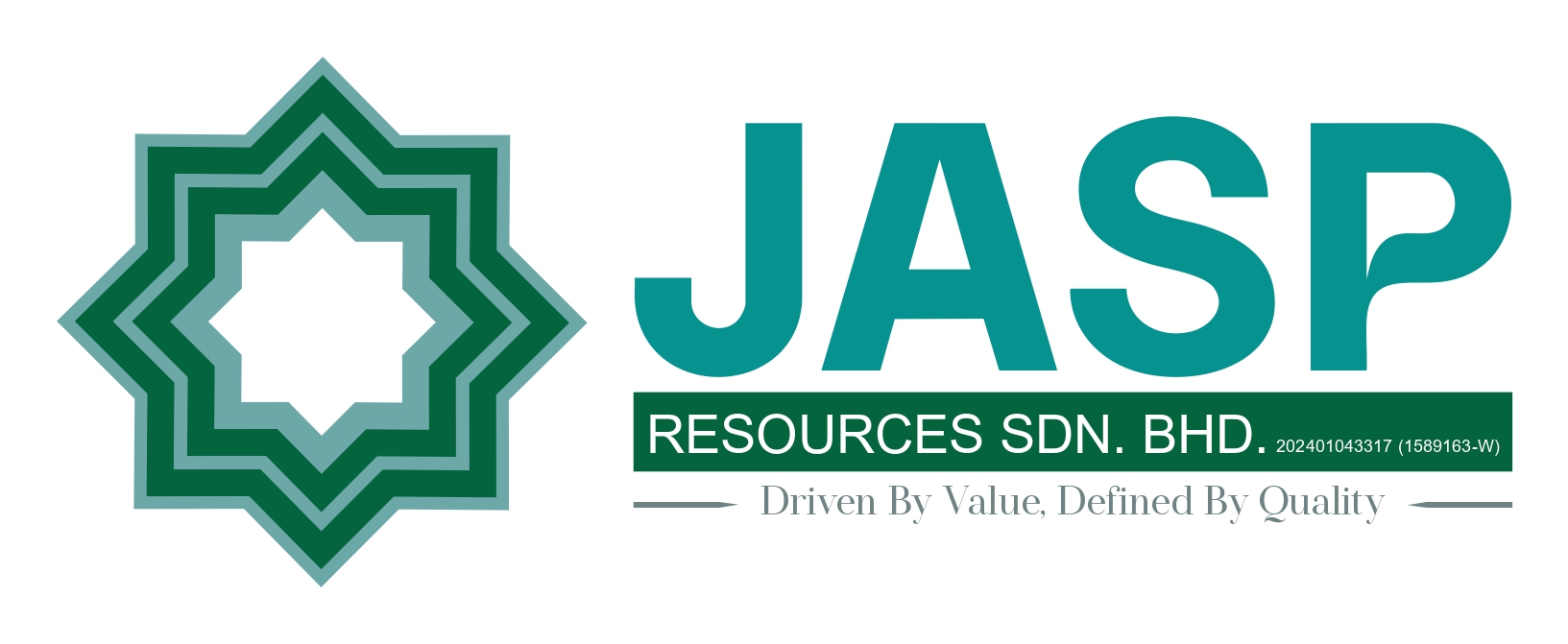HAZARDOUS AREA CLASSIFICATIONS (HAC) CONSULTANCY
The Hazardous (Classified) Location Study aims to assess and mitigate fire and explosion risks in general industries where hazardous substances such as flammable liquids, gases, vapors, and combustible dusts are present. Unlike chemical industries, where these risks are well recognized, general industries often overlook hidden hazards associated with limited but critical usage of hazardous materials in their operations. This study, conducted by JASP Resources Sdn Bhd, ensures compliance with international safety standards (NFPA, IEC, ATEX), enhances occupational health & safety, and helps businesses optimize capital expenditure while reducing legal liabilities.
Hazard Identification & Risk Assessment
- Identify the types of hazardous substances present.
- Assess environmental conditions, such as temperature and humidity.
- Categorize the risk of explosive atmospheres (e.g., gas, dust)
Classification of Hazardous Locations
- Class I – Areas with flammable gases and liquids.
- Class II – Areas with combustible dust risks
Zoning of Classified Locations
- Zone 0 / 1 / 2 (for flammable gases and vapors).
- Zone 20 / 21 / 22 (for combustible dust atmospheres).
- Defining horizontal & vertical zone extensions for precise safety mapping.
Assessment of Electrical Equipment in Hazardous Zones
- Reviewing installed electrical equipment (e.g., Ex d IIBT3 classification).
- Evaluating proper installation (location, conduit, sealing methods, etc.)
Identification of Compliance Deviations
- Checking for non-compliant or outdated electrical installations.
- Highlighting risks related to inadequate grounding, shielding, or sealing.
Corrective Action Recommendations
- Developing site-specific corrective measures for non-compliant areas.
- Providing guidance on upgrading installations to meet global safety norms.
The study focuses on three core principles to prevent explosions and fires:
Primary Explosion Protection Prevent formation of ignitable atmospheres
Secondary Explosion Protection Prevent ignition sources from triggering an explosion
Tertiary Explosion Protection Minimize explosion impact through containment & mitigation strategies
Comprehensive Risk Assessment Report
- Detailed documentation of hazardous areas, existing equipment, safety gaps, and non
compliance findings. - Recommended corrective actions for compliance
Hazard Zone Mapping & Drawings
- Customized hazard maps illustrating zones (horizontal & vertical spread).
- CAD integration for seamless facility safety planning
Implementation & Compliance Support
- Assisting in contractor selection, equipment procurement, and safety retrofits.
- Evaluating corrective work
proposals and overseeing final compliance approvals
CHEMICAL HEALTH RISK ASSESSMENT (CHRA)
In JASP, we provide comprehensive Chemical Health Risk Assessment (CHRA) services in accordance with the Occupational Safety and Health (Use and Standards of Exposure of Chemicals Hazardous to Health) Regulations 2000 (USECHH) under OSHA 1994, ensuring clients maintain a safe working environment free from chemical health hazards.
Our assessments and services adhere strictly to Occupational Safety and Health Act 1994 (OSHA)- USECHH Regulations 2000- Guidelines on CHRA (DOSH Malaysia)- Relevant Malaysian Standards (MS) and International Best Practices.
Assessment Steps
- Chemical Health Risk Assessment (CHRA)
- Chemical Exposure Monitoring
- Hazardous Chemical Inventory & SDS Review
- Development of Chemical Register
- Training on Chemical Safety & Health
- Local Exhaust Ventilation (LEV) Inspection
- Recommendations on Hierarchy of Control Measures.
Step 5: Risk Evaluation Assessment of existing control measures Determination of residual risks
Step 6: Control Recommendations
Action plan based on hierarchy of controls
Immediate and long-term recommendations
Step 7: Documentation
Comprehensive CHRA Report
Submission and presentation to the client
Step 8: Follow-Up & Review
Guidance for implementing recommendations
Review every 5 years or upon significant change
CHRA METHODOLOGY & STEPS
Step 1: Identifiction of Chemicals
Collection of Safety Data Sheets (SDS)
Site Chemical inventory and classification
Step 2: Workplace Assessment & Proces Review
Site walkthroughs to observe work activities
Identification of potential exposure routes
Step 3: Hazard Identification
Review of chemical properties and health impacts
Analysis of hazardous classification and labelling
Step 4: Exposure Assessment
Duration, frequency, and type of worker exposure
Use of exposure monitoring (if necessary)
ARC FLASH CONSULTANCY & SAFETY ASSESSMENT
We work with our Partner, Gloabl Risk Experts, provide comprehensive arc flash assessments, including risk evaluations, analysis of electrical systems, and the development of safety protocols. Our arc flash consultancy ensures that your organization is compliant with electrical safety regulations and mitigates the risks associated with arc flash incidents. Arc flash incidents occur when there’s an electrica fault, releasing dangerous energy that can cause injury or death. JASP Resources Sdn Bhd conducts Arc Flash Risk Assessments, providing a detailed analysis and safety strategies to minimize the risk.
Assessment Steps
- Assess the electrical distribution system, including circuit breakers, ransformers, and relays.
- Calculate incident energy levels to determine the necessary PPE.
CHRA METHODOLOGY & STEPS
- Ensure protective devices (circuit breakers, fuses) are coordinated to limit fault duration.
- Adjust settings for optimal protection and minimal damage in case of faults.
CHRA METHODOLOGY & STEPS
- Assess the electrical distribution system, including circuit breakers, ransformers, and relays.
- Calculate incident energy levels to determine the necessary PPE.
Safety Audits & Compliance Review
- Perform arc flash safety audits to ensure compliance with NFPA70E, OSHA, and IEC 61892.
Training for Workers
- Conduct training sessions on recognizing arc flash risks, wearing proper PPE, and following safe working practices.
ARC FLASH & ELECTRICAL SHOCK HAZARD
An Arc Flash is a high-energy electrical explosion that occurs when current travels through air between conductors or from a conductor to ground. It is one of the most dangerous electrical hazards, releasing intense heat, light, sound, and pressure waves. These explosions can vaporize metal, ignite fires, and seriously injure or kill workers nearby.
Electric Shock, while different, is equally hazardous. It happens when a person becomes a path for electrical current due to poor insulation, faulty equipment, or inadequate protective grounding.
Assessment Steps
If your facility operates equipment above 50 volts, you are exposed to the risk of arc flash. Regulatory bodies such as OSHA, NFPA, and IEEE mandate that employers identify, assess, and mitigate electrical hazards.
Failure to comply can result in:
- Employee injuries or fatalities
- Equipment destruction and fire
- Insurance claims or lawsuits
- Fines, citations, and operational shutdowns
- Reputational damage
JASP Resources Sdn Bhd provides comprehensive Arc Flash Risk Assessments to help your organization remain compliant, safe, and efficient.
- Your equipment operates at 50 volts or higher
- Your system has not been assessed in 5 years (per NFPA 70E)
- You’ve made modifications or expansions to your system
- You operate in a state or region that has adopted NFPA 70 (2017 edition or
later)
- You have no remote de-energization capability
- You cannot confirm current arc flash boundary labels are accurate and visible.
Phase 1: Engineering Analysis
- Review and validate existing system documentation
- Load Flow Studies: Analyze electrical load
distribution, voltage profiles, and system efficiency - Short Circuit Studies: Calculate fault currents to
assess equipment stress and protection
requirements - Protective device coordination study
- IEEE 1584 arc flash risk modeling
- Identify equipment exceeding incident energy
limits - Recommend protective device settings and PPE
requirements - Preliminary report with findings and recommendations.
Phase 2: Site Verification & Labelling
- On-site inspection and verification of
electrical systems - Validation or creation of as-built single-line
diagrams - Verification of breaker settings and device
coordination - Installation of arc flash hazard labels and
stickers on all relevant equipment - Staff instruction on hazard label
interpretation - Optional electrical safety training and certification.
When you engage JASP Resources, you’ll receive
- Updated One-Line Diagrams
- Load Flow and Short Circuit Study Reports
- Protection Device Coordination Study
- Arc Flash & Shock Hazard Assessment (boundaries, incident energy)
- Arc Flash Labels & Stickers Installed On-Site
- PPE Level Classification per Equipment Location
- Comprehensive Final Report
- On-Site or Virtual Training for staff, if required
Standatd and Regulations We Follow

NFPA 70E – Electrical Safety in the Workplace
Defines employer responsibilities for hazard assessment, PPE, electrical work practices, and labeling. Requires that assessments be reviewed at least every five years and updated when system changes occur.

NFPA 70 – National Electric Code (NEC)
The foundational electrical code adopted across the U.S. (and mirrored in many international jurisdictions). It covers electrical system design, installation, and safe operating practices.

IEEE 1584 – Arc Flash Hazard Calculations
Provides the industry-standard methodology for calculating incident energy, arc flash boundaries, and shock protection distances.

OSHA 29 CFR Part 1910 Subpart S
Requires employers to protect workers from recognized hazards—including electric shock and arc flash—through assessments, controls, and PPE.
Phases for Completing an Arc Flash Analysis
ARC FLASH ASSESSMENT AND ANALYSIS FOR OIL AND GAS
At JASP Resources Sdn Bhd, we deliver expert Load Flow Analysis services tailored specifically for oil and gas rigs, ensuring adherence to international standards such as IEEE, NEC, and CLASS requirements. With a deep understanding of offshore electrical systems and high-risk environments, our certified engineers provide detailed insights into the electrical performance, safety, and expansion potential of your rig operations.
Our engineering team utilizes SKM Power Tools for Windows (PTW)—a trusted industry-standard software from SKM International, USA—to perform highly accurate load flow studies.
SKM Power Tools for Windows
These tools allow us to simulate realworld operating conditions and optimize your electrical network for
both current and future demands.
Our in-depth analysis covers a wide range of
offshore rig configurations including Deep Drilling,
Shallow Drilling, Jacking, and Maintenance
Operations. These studies deliver insights on:
- Equipment loading patterns
- Loss calculations (real and reactive)
- Voltage drops across the system
- Busbar voltage levels and available capacity
- Load current distribution across feeders
- Equipment withstanding capacities and
percentage loading Our load flow analysis not only captures the present
operational status of your rig’s electrical network,
but also highlights areas where capacity exists for
future upgrades and enhancements.
We offer global service coverage with a team of
trained and certified engineers who perform onsite data collection and engineering assessments
as per IEEE and CLASS requirements.
- Deep Drilling, Shallow Drilling, Jacking & Maintenance Operations
- Power System Modeling & Load Pattern Analysis
- Load current at each node
- Voltage dropcalculations
- Busbar voltage availability
- Equipment withstanding capacity
- % Loading for all configurations
- System imbalance detection
- Loss analysis (active & reactive)
- Expansion readiness assessment and future scope recommendations.
Conducting as Load Flow Study on Your Oil Rig:
- Ensures safe system performance in complex offshore environments
- Meets CLASS and IEEE compliance standards
- Prevents voltage instability and system overload
- Optimizes equipment lifespan and energy nefficiency
- Highlights areas for future load expansion or optimization.
In addition to Load Flow Analysis, we provide a full suite of power system studies for offshore facilities:
- Short Circuit Studies – Calculate maximum fault currents for safety and equipment protection
- Protective Device Coordination – Ensure all breakers and relays operate selectively and safely
- Arc Flash Risk Assessment – Determine incident energy levels and PPE requirements
- Arc Flash Labelling & PPE Guidance – Installation of compliant hazard labels and worker safety plans
- Harmonic Analysis – Identify and mitigate harmonic distortion from nonlinear loads
- Single Line Diagram (SLD) Development – Accurate schematics for operational clarity and documentation
Our services comply with:
- IEEE Load Flow Standards
- NEC (National Electric Code)
- NFPA 70E (Workplace Electrical Safety)
- Marine classification society requirements (ABS, DNV, Lloyd’s, etc.)
We proudly serve clients globally, providing:
- On-site data collection by trained and certified engineers
- Full engineering analysis and report generation
- Support for regulatory approval and marine classificationsociety audits
Final Report Includes
- Detailed Load Flow Results
- Voltage Profile Summaries
- Single-Line Diagrams (SLDs) Actionable engineering recommendations
- Configuration-based analysis (e.g., jacking, drilling, standby)
- Equipment loading matrix.

